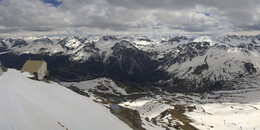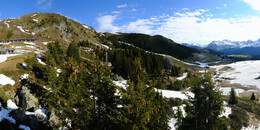St. Peter-Molinis, Pagig & Tschiertschen
Characterized by natural forces and political power struggle
„Fürcht nicht die Welt - greif tapfer an“ („Do not fear the world – persue bravely“) it is unclear whether the old saying on the train station building of St.Peter – Molinis was a result of the many natural forces which the village Molinis had to struggle with or if it was the result of the political conflicts which were carried out on the square in front of the church. In any case both villages can tell a lot of stories about politics and nature.
Discover Arosa
During the winter and the summer season there are plenty of happenings in Arosa! The mountains, the village and the lake offer unlimited options. Browse through the numerous topics and find your favourite activity.
















